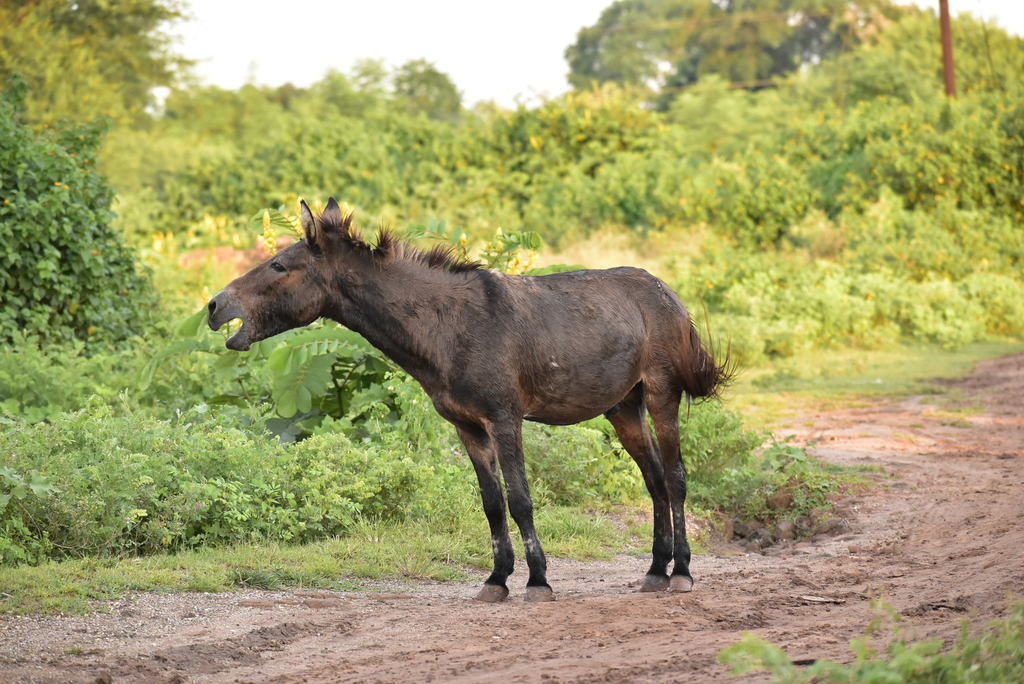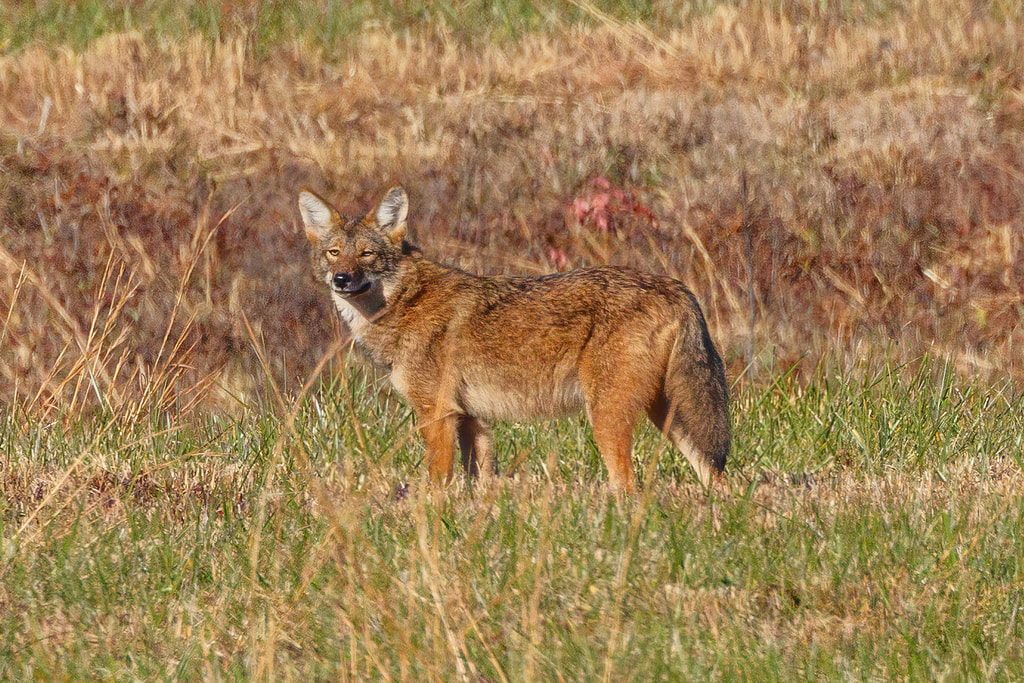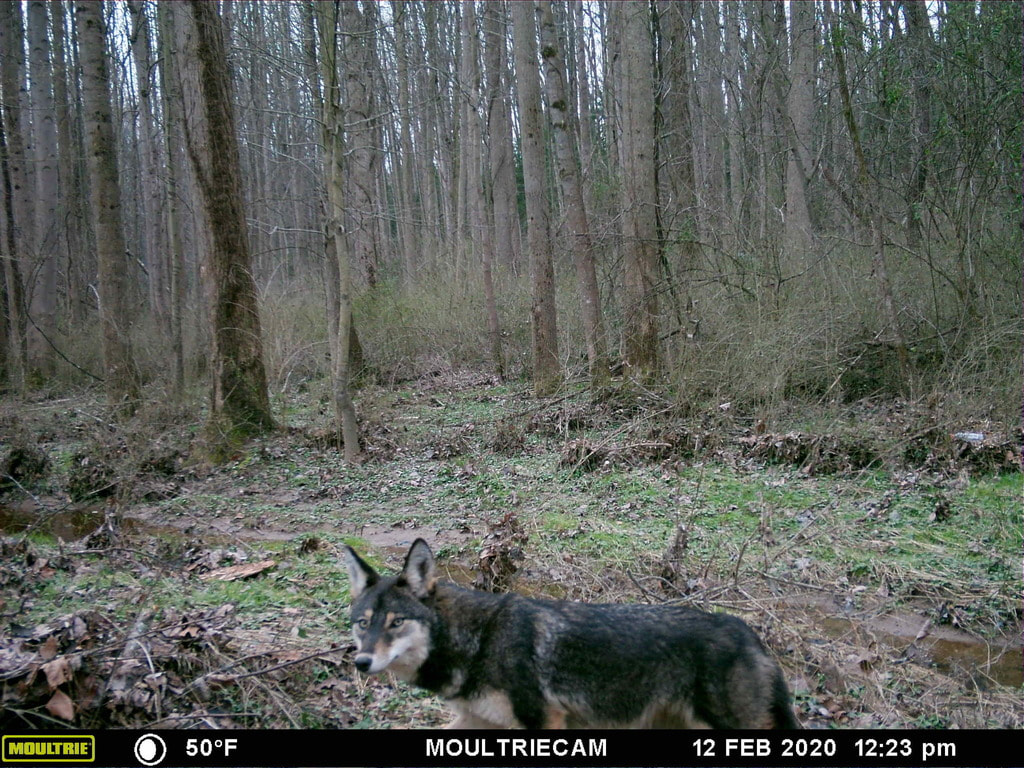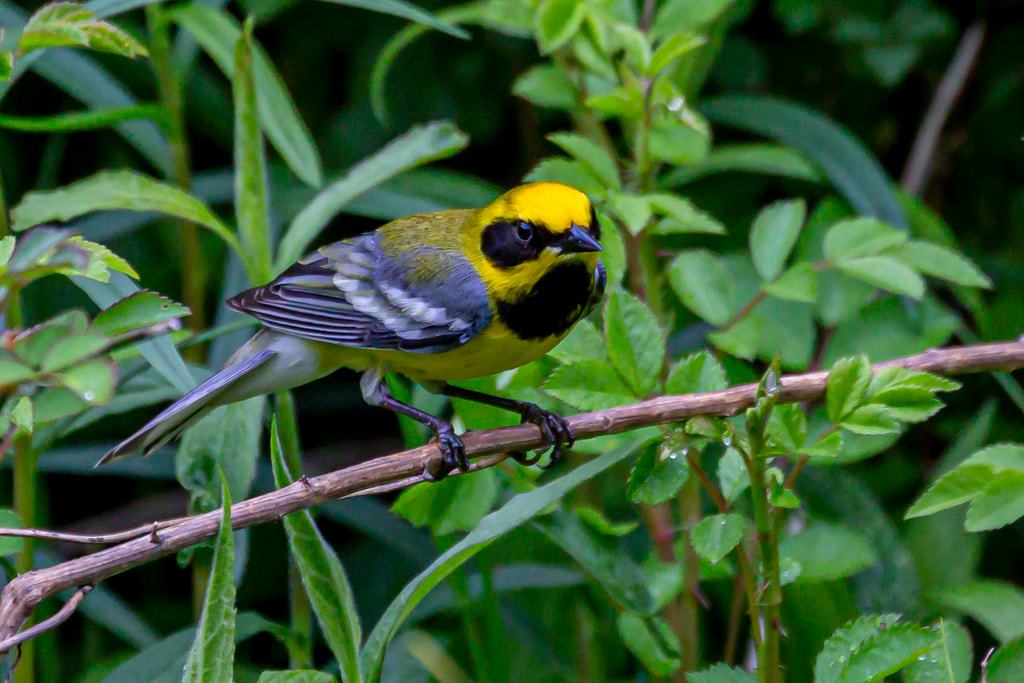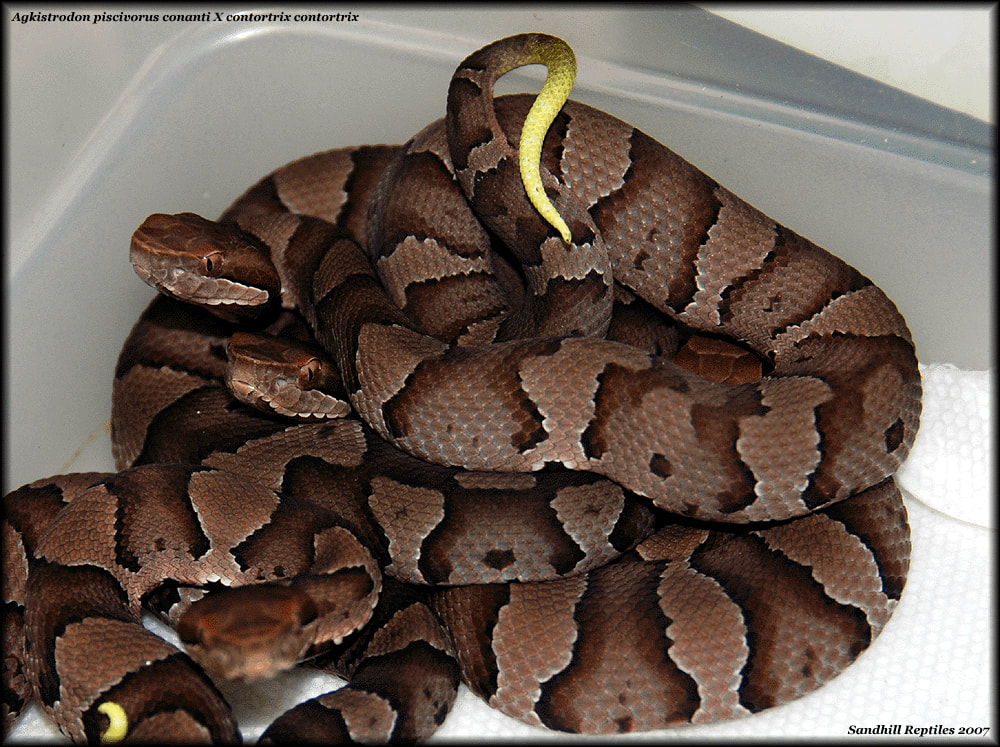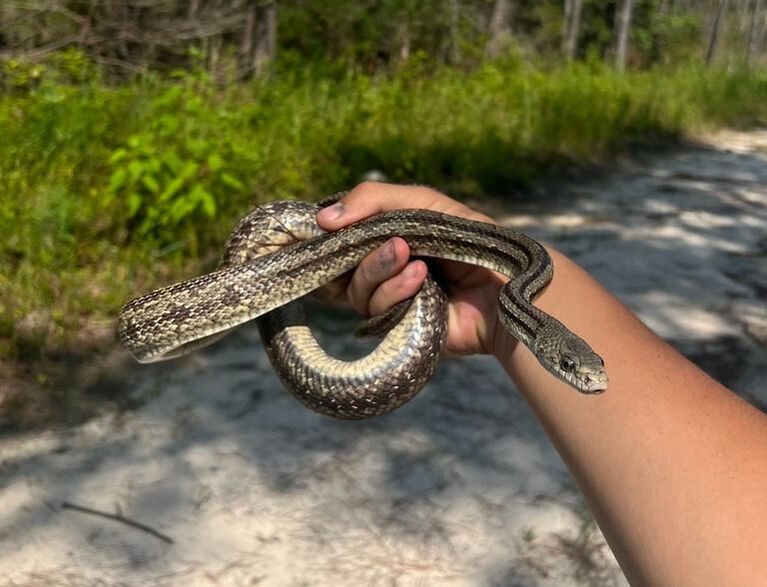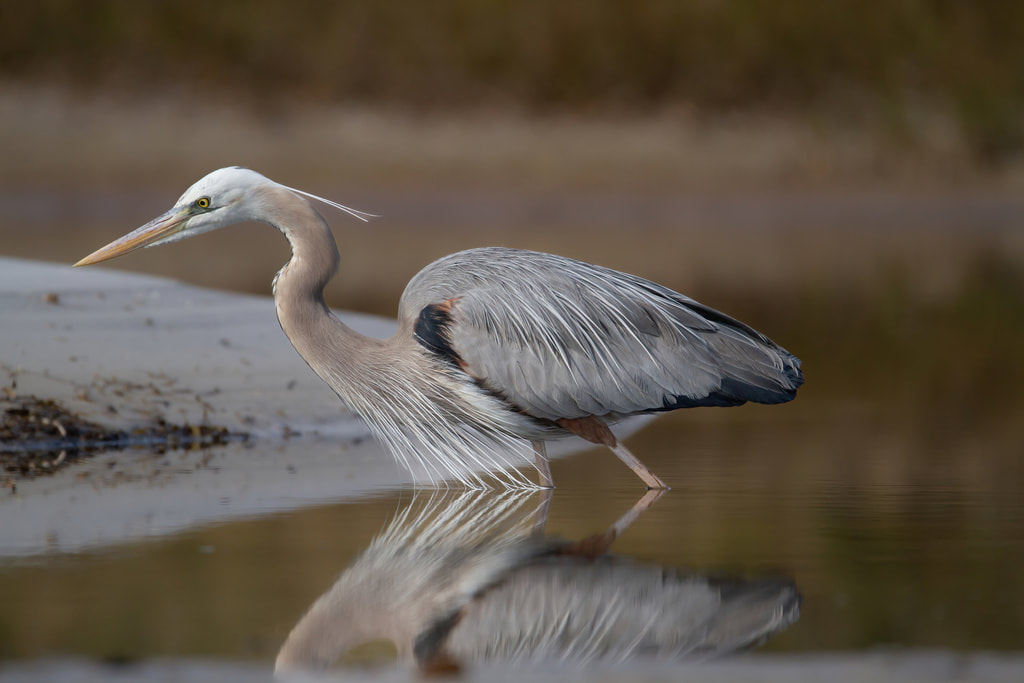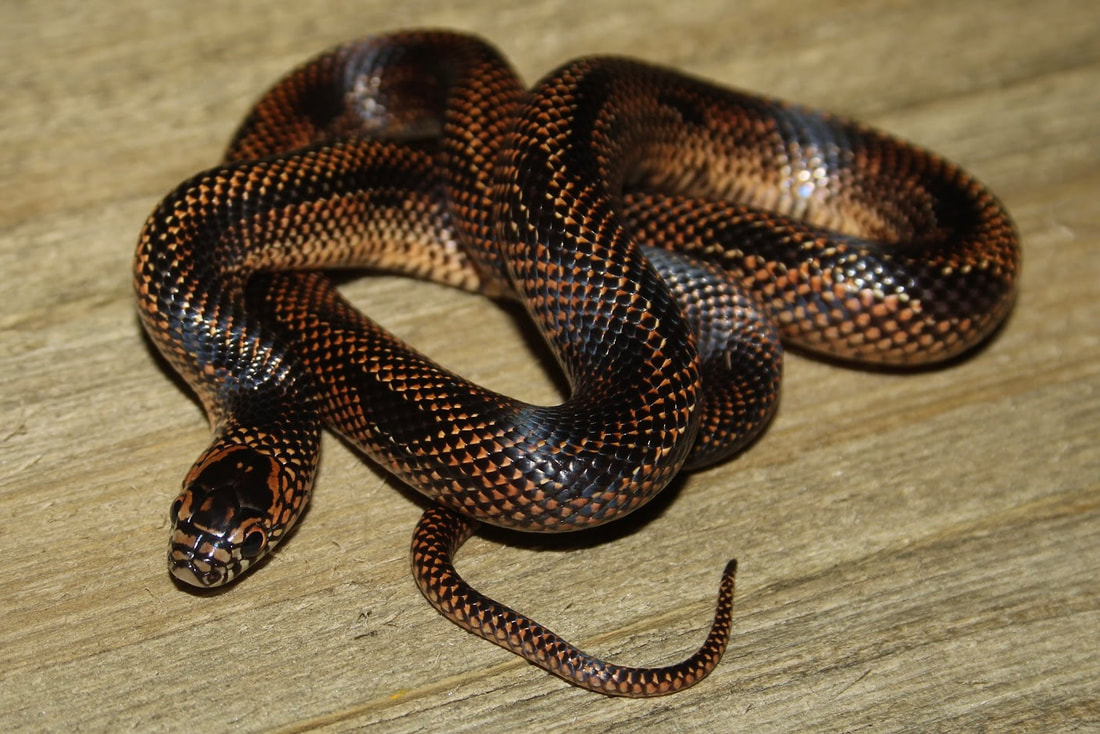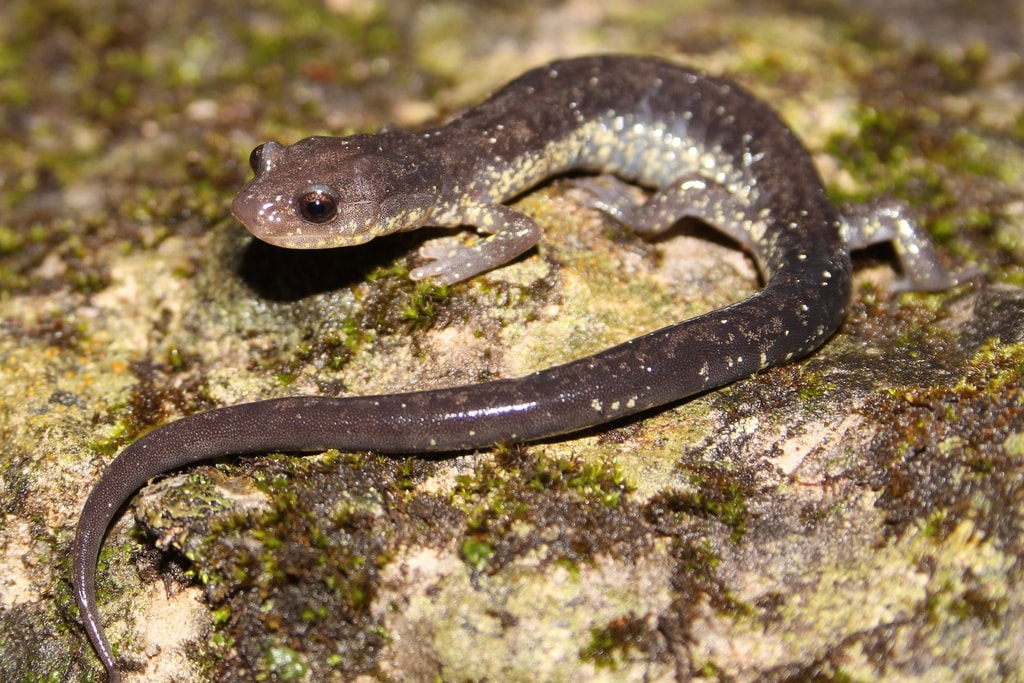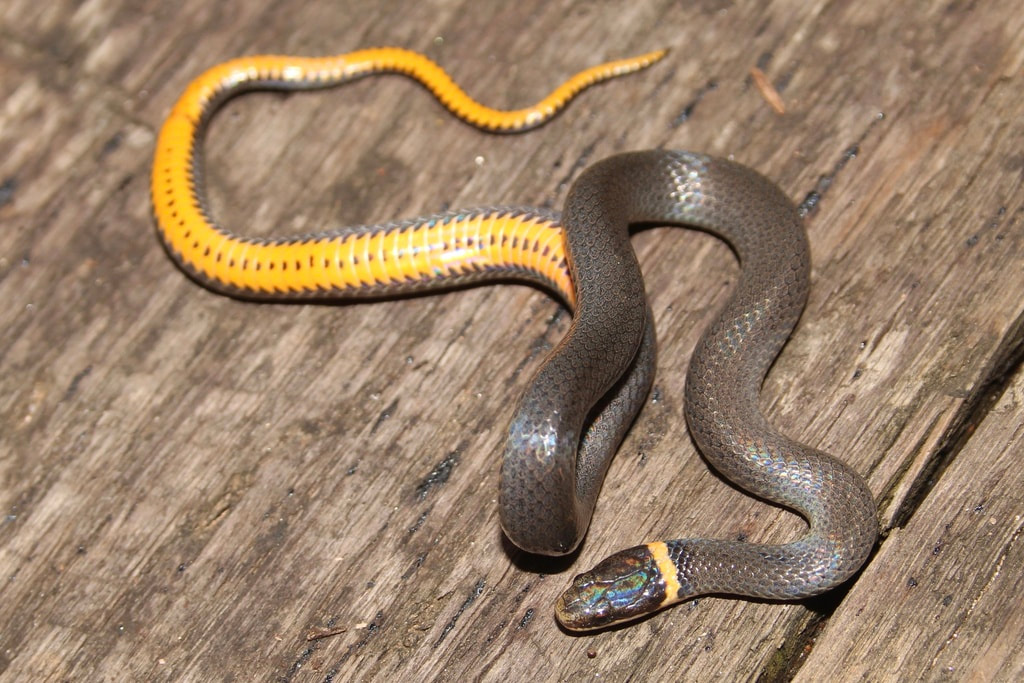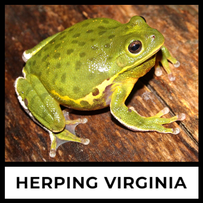OverviewI try my best to keep our taxonomy on this website up-to-date based on current papers, and sometimes taxonomic decisions are made that cause controversy. I try my best to stay in the middle grounds, but sometimes that means I am "stuck between the firing cannons"... I will say that four years ago, I had conversations on iNaturalist about how the Duskies in the piedmont of Virginia and North Carolina are just so different than the ones in the mountains. We got grilled hard for suggesting that individuals like the one above look much more like, what was at the time, the Holbrook's Southern Duskies that are now the Wolf Dusky (Desmognathus lycos), than they do Northern Duskies. Then after dealing with this for two or more years, the first Pryon & Beamer paper came out and suggested not just that these are nearly identical from nuclear DNA to the Holbrook's Southern Dusky, but completely potentially new species. So, many think because of that, I am a "splitter"; but am I? So, you want my thoughts on species? Here is my thoughts on species as a whole: one of the biggest failures in ecological science, in my opinion at least, is the inability to define a species. Now I don't mean define as in a dictionary sense, but in an actual what makes a species a species sense... Have I lost you yet...? You see, what irks me the most with taxonomy is the fact taxonomy is as I say "administrative", meaning its just a theoretical filling system for organisms... If we take humans for example, and look for them in this theoretical system, one can imagine they are going in the storage room labeled "Phylum Chordata", going to the filling cabinet that says "Class Mammalia", opening the drawer labeled "Order Primates", finding the divider that is labeled "Family Hominidae", opening the folder labeled "Genus Homo", and pulling the paper labeled "Homo sapiens". All taxonomy is no more than an elaborate filling system. I think a lot of newer naturalist are so confused by this, because they think it is some hard fast law, yet it is so intangible, when really, it is just metaphorical paperwork... Now, you have a folder at your doctor's office with your name on it, but that folder is not you. Sure it has records and facts about you, but this is a folder and not you as a person. Just as you are not the folder labeled with your name, life does not evolve to become species. Life just wants to pass on its genes. A species is not a true biological theory, but rather an ecological construct we use to label a group of organisms. So, if a species is a man-made label, why do we not have a standard in place to set these labels? And when I say that, many people respond with, "We do. It is in the definition." Well, let's look at the definition according to the Oxford Dictionary: "a group of living organisms consisting of similar individuals capable of exchanging genes or interbreeding. The species is the principal natural taxonomic unit, ranking below a genus and denoted by a Latin binomial, e.g. Homo sapiens." (Oxford Languages) Now, I don't want to completely knit-pick this definition apart, but I do have to "hit it with a fine-toothed comb to get the fleas out"... You see "a group" is very unspecified as it could mean any number. This is fine as species populations vary drastically, but the issue is one can take two groups of anything and put them together and then do you have two groups or one...? Then you have the line "consisting of similar individuals"... This is an issue of perspective. Common Five-lined Skinks and Broadhead Skinks are very similar animals, while a Chihuahua and a Chow are very different animals. I also must point out that there are several species concepts because not all life is capable of "exchanging genes or interbreeding". Some organisms are all biological females, and reproduce without swapping genes, like Mourning Geckos, and some organisms divide cellularly. Finally, how do we know based off of fossils which species could interbreed? We really don't... Dog and Wolf skeletons are very similar, so where do you split the species based on bones? These are just examples to make you think about how flawed species truly are. Hybrids
meaning the animal is a hybrid between two species and not a cross within one species. A hybrid was often defined as always being "sterile" or "genetically weak", but then we kinda got a wake-up call... Coyotes, Gray Wolves, and Domestic Dogs have long been their own species, and in my opinion, they should be. These three have long been known to interbreed, but the offspring were dubbed "genetically weak". Well, how do we judge something as "genetically weak"? Does it have health problems? If it struggles to survive in the wild due to instinctual hindrances, such as Ligers (which are mentally incapable surviving in the wild)? Well, at the time it seems we were doing it based on personal opinions... I suspect the thought was by crossing a Domestic Dog with a Gray Wolf, one was toning down the hunting capabilities of the Wolf, while with a Mule (which was often viewed as strong but sterile) takes the muscular build of a Donkey and magnifies it to the size of a horse. This makes a Mule physically strong, and therefore strong in the eyes of early biologist.
to take down prey such as deer that Western Coyotes struggle with, but able to scavenge food sources like fruit, insects, and human trash in a way Gray Wolves cannot. The hybrid did not yield weak animals, just different animals.
that parent species, causing an entire line of offspring to be not 100% "pure"... Well, that sounds a bit eugenic but hear me out here. If a 25/75 hybrid crosses with a the dominant parent species, it is then a 12.5/87.5 hybrid. This happens 10 more times and you still have an animal that is only ~99.99% that one parent species. But we must also factor in other hybrids. So, with these Coyotes, there may be in one specimen 80% Coyote, 5% Gray Wolf, and 15% Domestic Dog, but is it worth calling it a hybrid when hybrids really have no meaning to us taxonomically? What about a whole population? Maybe in unnatural hybrids. I would be mad if someone sold me a snake that I thought was 100% Kingsnake to find it is 10% Cornsnake... That said, we deal with everything from a conservation stand point and law making standpoint by species. A lot of birders see things differently (which is fine) and give a name to every phenotype of Golden-winged Warbler x Blue-winged Warbler hybrids and back crosses, while others argue the two should not even be two different species. I just feel these genetic percentages show how much of a spectrum two species can exist on. Take a yellow to red spectrum. You can knit-pick what colors things are, but pretty much that spectrum will be 1/3 yellow, 1/3 orange, and 1/3 red. There is a point where red and orange, as well as yellow and orange, are highly debatable; but if you say anything in this third is this color, you actually can measure it. Now replace yellow with Coyote, orange with hybrid, and red with Domestic Dog. Now yes, you would only know the true extent of hybridization if you were to look at the genetics, which I think bolsters only this rule of thumb in the field. Think about us as humans, when we do an ancestry test and find we are 10% some random ethnicity that shares no physical attributes with the ethnicity we identify as. There is no point breaking it down on our legal paperwork as "63% this ethnicity, 28% this ethnicity, and 9% this ethnicity", because I would dare say it is probably close to 0% (meaning their may be a few, but its one in a million) of Americans whose lineage has been in the US for multiple generations are purely one ethnicity. We just usually take the dominant one (from a genetic percentage) and check that box. It is a "good enough for government work" approach, which is fine, because hybrid means nothing towards conserving a species. If you don't like this rule of thumb, guess what... Its a rule of thumb. It is not meant to be anymore accurate than measuring distance with your strides. You can use a different method if you want.
What You Came Here For...Now we have gotten into the nitty-gritty of this whole article. So, now let's talk about this definition: "a group of living organisms consisting of similar individuals capable of exchanging genes or interbreeding." This definition does not say that species cannot be similar and interbreed with each other, but we can definably derive if two populations cannot interbreed, they are different species. Now what does it mean to "not interbreed". Are two populations completely cut-off from one another two species because they cannot interbreed through their natural barriers? If so, what if those barriers disappear?
Now, there is the "Ecological Niche Concept". Pretty much, each niche is filled by a species and, therefore in theory, if two organisms share the same niche they are the same species. Now, I do not like this theory, because ecosystems are made-up in part by the populations that reside in them. A "maple/hickory ecosystem" is very different than a "Longleaf Pine savanna ecosystem", so species that live in both have to slip into slightly different niches to survive, or they just do not live there. This is why two similar species often relegate themselves to two different habitat or soil types. That said, this does not make a population that can tolerate this a new species from the others. Now, some people take a niche in a more general aspect. A Ratsnake is a Ratsnake no matter what it is feeding on, or being eaten by because it is still a mesopredator. That is fine, but that also seems too broad. All of our rodent-eating snakes are mesopredators prayed on by similar animals, and they are clearly not all the same species. It just seems a bit too situational to be a real "rule". So, while I agree with a lot of this theory, I just don't feel it should be used to delineate species. If you do, that is fine. Maybe I just have not heard the right argument for it yet, but I felt like I had to bring it up with out doubling the length of this article...
Let us use a human as an analogy. Say we were filling celebrities in our system, and we have to put Elvis Presley in a file. Do we label him a "singer" or "movie star"? Some would say, "He was a much better singer than an actor, so we'll call him a singer." My step-father would argue the opposite, and some people would say, "Well, he was both..." Humans are not meant to fall under one label. I am a (herpetology focused) naturalist, Conservation Technician, husband, brother, and adventurer all in one.
assistance, able to grow and develop, responsive to stimuli, cellular, and process energy. Viruses must highjack cells to make them copy its RNA to reproduce, they do not grow or develop, nor are they cellular, and are therefore not life. Just as a species is an artificial construct, what is life is as well... So, maybe one day we can sit down as scientists and say: a species is x, y, and z; but until then a species is what one's interpretation of it is. What About Subspecies and Other Small GroupingsHere is another controversial grouping: subspecies... A lot of people get frustrated with subspecies and use the argument "subspecies don't exist"... Well, as we have pretty much covered, species really do not exist... A subspecies is a population within a species that is beginning to diverge, but has not became its own species. It seems, in my opinion, the growing consensus of throwing away subspecies has caused this rift of do old subspecies become species or do they become a variant? A geographic variant is a population of organisms that look different based on a geographical region, but have no true differences that warrant them to be different species or subspecies (for an example: Humans). We used to use "race" to describe these variations, but the actual creation of the "race concept" is... well pretty dark and bigotry on its own... In my honest opinion, we could solve most of these arguments by simply using subspecies. To me, it comes down to conservation. A law can be written to protect a species because it has a scientific name. A law can be written to protect a subspecies because it has a scientific name. Geographic variants do not get their own classification or scientific name, so it is nearly impossible to write a law to protect a geographic variant unless there is a clear boundary line. For example, the Canebrake Rattlesnake is a geographic variant of the Timber Rattlesnake, and they are in need of protection; so there are more protections in place for Timber Rattlesnakes in the southern Coastal Plain of Virginia. But what happens if we are wrong about these ranges... If we discover a new population just outside of the known range, they then lack these protections. I personally think geographic variant describes the Canebrake Rattlesnake quite well, but for more complicated cases like the North American Ratsnakes, I think subspecies makes as much, if not more sense as species. I just think when you are trying to label shades of gray into black and white boxes, it makes sense to make a box that is for the shades of gray that are too in-between for a unanimous call. Once again, all of this is pure interpretation, and if you disagree, that is fine.
Sticking with our Labs, color is a morph, and is impacted by the parents' and grandparents' genetics. Two black Labs can produce yellow or chocolate puppies based on their genetics. Even albinism is often considered a morph. ClosingOkay, now time to make someone mad. I generally go with the flow, and use the most recent taxonomy available when crafting an ID. I will tell people straight, out-right, "Currently it is *insert name here* but it may be split or lumped", depending on the situation. I do think that, as science progresses, we will see a world favoring splitters in my life time. I just feel life is so complex, and we are going to go down the proverbial rabbit-hole of trying to name every population, because each population is so valuable. I see the benefit of splitting, but when is it just too far and unnecessary? That is the true decision we need to come together and compromise on. As I said, a species is a man-made construct. We decide what is a species. Splitters and lumpers are just interpreting the same definition different ways. It shouldn't be such a personal dispute, as I really feel neither side is wrong. This is just two different ways of accomplishing the same goals. So, why can't we just sit down and set basic, unbiased guidelines?
Comments are closed.
|
Ty (the SnakeMan) SmithTy is a Master Naturalist (with over 1,000 hours of volunteer service), former State Park Naturalist, and Virginia Herpetological Society (VHS) member with an expertise in East Coast Herp identification and southeastern species habitat/distribution. Archives
June 2024
Categories |
|
Herping Virginia encourages all naturalists to practice ethical, safe, and sustainable herping. The use of proper herping methods and techniques is beneficial to both wildlife and herpers. Visit the links below for more information.
|
Copyright © 2024 Herping Virginia

